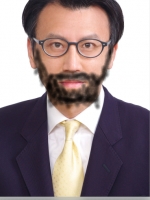The rise of the machines is here, but they do not come as conquerors, they come as creators.
機器於此興起,但非以征服者之姿,而係以創作者之姿。
引述WIPO(世界智慧財產權組織)10.2017之文章,藉此介紹人工智能之興起與著作權之關係。
Google has just started funding an artificial intelligence program that will write local news articles. In 2016, a group of museums and researchers in the Netherlands unveiled a portrait entitled The Next Rembrandt, a new artwork generated by a computer that had analyzed thousands of works by the 17th-century Dutch artist Rembrandt Harmenszoon van Rijn. A short novel written by a Japanese computer program in 2016 reached the second round of a national literary prize. And the Google-owned artificial intelligence company Deep Mind has created software that can generate music by listening to recordings.
Google現正資助人工智能計畫,使其可撰寫新聞文稿。2016年,荷蘭一些研究人員及博物館團體揭示名為 The Next Rembrandt,的肖像,一個由電腦創作的全新藝術作品;其分析數以千計17世紀荷蘭藝術家 Rembrandt Harmenszoon van Rijn創作之作品而得。一部由日本電腦程式所寫的短篇小說於2016年獲得第二輪國家文學獎。同時Google旗下的人工智能公司Deep Mind創作一款藉由聆聽錄音即可產生音樂的軟體。
Other projects have seen computers write poems, edit photographs and even compose a musical.
其他計畫進程已見著電腦創作詩詞,可編輯照片甚至可作曲。
Robotic artists have been involved in various types of creative works for a long time. Since the 1970s computers have been producing crude works of art, and these efforts continue today. Most of these computer-generated works of art relied heavily on the creative input of the programmer; the machine was at most an instrument or a tool very much like a brush or canvas. But today, we are in the throes of a technological revolution that may require us to rethink the interaction between computers and the creative process. That revolution is underpinned by the rapid development of machine learning software, a subset of artificial intelligence that produces autonomous systems that are capable of learning without being specifically programmed by a human.
機器藝術家創作不同類型之創作已歷經時日。自從1970年電腦創作粗陋的藝術作品以來,這些創作持續至今日。
A computer program developed for machine learning purposes has a built-in algorithm that allows it to learn from data input, and to evolve and make future decisions that may be either directed or independent. When applied to art, music and literary works, machine learning algorithms are actually learning from input provided by programmers. They learn from these data to generate a new piece of work, making independent decisions throughout the process to determine what the new work looks like. An important feature for this type of artificial intelligence is that while programmers can set parameters, the work is actually generated by the computer program itself – referred to as a neural network – in a process akin to the thought processes of humans.
Creating works using artificial intelligence could have very important implications for copyright law. Traditionally, the ownership of copyright in computer-generated works was not in question because the program was merely a tool that supported the creative process, very much like a pen and paper. Creative works qualify for copyright protection if they are original, with most definitions of originality requiring a human author. Most jurisdictions, including Spain and Germany, state that only works created by a human can be protected by copyright.利用人工智能創作著作對著作權法有很重要的意涵。傳統上,電腦創作著作之著作權本來不是問題,因為電腦程式僅是支援創作過程的一個工具,與紙跟筆相似。假如具有原創性創作出來的著作即受著作權法保護,而原創性多數的定義乃係人為創作主體。大部分之國家包括西班牙及德國,其規定人創作之著作才受到著作權之保護。
But with the latest types of artificial intelligence, the computer program is no longer a tool; it actually makes many of the decisions involved in the creative process without human intervention.
但隨著最新的人工智能類型,電腦程式不再是一個工具;其實際上做成許多牽涉無須人介入創作過程的決定。
Commercial impact商業上之衝擊
One could argue that this distinction is not important, but the manner in which the law tackles new types of machine-driven creativity could have far-reaching commercial implications. Artificial intelligence is already being used to generate works in music, journalism and gaming. These works could in theory be deemed free of copyright because they are not created by a human author. As such, they could be freely used and reused by anyone. That would be very bad news for the companies selling the works. Imagine you invest millions in a system that generates music for video games, only to find that the music is not protected by law and can be used without payment by anyone in the world.
While it is difficult to ascertain the precise impact this would have on the creative economy, it may well have a chilling effect on investment in automated systems. If developers doubt whether creations generated through machine learning qualify for copyright protection, what is the incentive to invest in such systems? On the other hand, deploying artificial intelligence to handle time-consuming endeavors could still be justified, given the savings accrued in personnel costs, but it is too early to tell.
